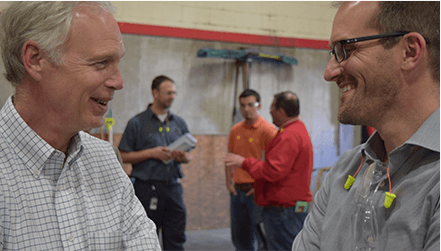From the Racine Journal Times:
When the R.M.S. Titanic sunk over 100 years ago, more than 1,500 of the 2,224 souls aboard perished after the ship crashed into the iceberg. Forevermore, the ship’s name became synonymous with human tragedy of epic proportion. But the White Star Line’s track record — saving one in three passengers — compares favorably to the Food and Drug Administration’s so-called “expanded access” program for terminal patients.
Yet you wouldn’t know it if you listened to the FDA official testifying before my Senate committee last Thursday. Dr. Peter Lurie, the FDA’s associate commissioner for public health strategy and analysis, declared that the “FDA is proud of its expanded access process for individual patients,” which has “stood the test of time and serves over 1,000 patients a year.” The FDA celebrates its track-record of approving 99 percent of all expanded access applications each year.
But this is as tone-deaf as it would have been had the Titanic crew celebrated the survival rate of all its passengers who made it into lifeboats. What about all of the other passengers who drowned?
Millions of Americans battle terminal diseases each year. Nearly 600,000 will die this year from cancer-related diseases alone. Often for terminal patients given a diagnosis of certain death, there are few options. Many may initially search for an FDA clinical trial in which to enroll. But the odds are long for most patients. To have a chance, a patient must be seeking out treatment at the right time when a trial is enrolling, have access to a trial center, and be healthy enough to serve as an adequate test subject to compare with other patients. As former Navy pilot and ALS patient Matthew Bellina explained at the Senate hearing, “at some point in the near future, I’m going to suffocate under the weight of my own chest,” yet he doesn’t qualify for a clinical trial because he’s “had the disease too long.”
The FDA’s expanded access program is a limited last resort. While developing one of the largest Phase I clinical trial departments in the world at MD Anderson Cancer Center, Dr. Razelle Kurzrock enrolled around 1,250 trial participants per year, but recalls only one or two expanded access cases per year.
As my committee was learning about these issues, she explained “it was generally understood that you don’t apply for expanded access unless it was effectively ‘preapproved’ and the outcome was fairly certain.” So the 99 percent acceptance rate doesn’t account for those who are discouraged from applying because they know they are likely to be rejected, and more importantly, doesn’t address the thousands of people caught between exclusion from a clinical trial and approval of the treatment.
Even by comparison, the FDA isn’t leading the way. In 2014, the FDA accepted less than 2,000 cases, but that same year, the equivalent program in France accepted 12,000 —and France is one-fifth the population. In other words, France is able to provide more lifeboats despite being a smaller ship.
Expanded access also entails significant risk to the pharmaceutical company, which has likely invested tens, if not hundreds, of millions of dollars in developing the treatment and sponsoring the clinical trials, because making the treatment available to the sickest patients could jeopardize its chances for approval, an often decade-plus long process.
Fortunately, an alternative pathway for terminal patients has been spreading across the states. Thirty-one states have now adopted so-called “right to try” laws, with nearly unanimous support. These laws simply say that a terminal patient, doctor, and pharmaceutical company can come together to administer an experimental treatment when they think it could help and no alternatives exist. Eligible treatments are limited to those that have completed the FDA’s Phase I safety trials. The laws do not require asking permission from the FDA.
Unfortunately, federal law makes the effect of these state laws unclear. Risk of lawsuits and adverse FDA actions make it difficult for doctors and companies to treat under these laws. In Congress, I introduced legislation which effectively tells the federal government to respect right to try laws in those states that have them — it does not compel a state one way or another. My bill, which has bipartisan support from 42 senators, also provides additional protections for doctors and participating companies and ensures that patients have pursued alternatives like clinical trials and existing treatments. Similar legislation is in the House of Representatives.
As I always emphasize when talking about this bill, no one, especially Congress, can guarantee a cure. What we can do is remove barriers keeping terminal patients with no alternatives from promising, if experimental, treatments. This bill would restore freedom to patients, and give them and their families hope.

